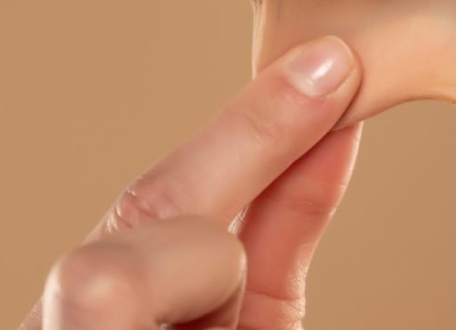The skin that joins the penis and scrotum is called penoscrotal webbing or “turkey neck” in common terminology. When the scrotum’s skin is linked to the penile shaft’s underside and covers the penoscrotal angle, it is known as penoscrotal webbing, which often develops at birth or as a result of difficulties from circumcision during infancy. The severity of the penoscrotal webbing increases with the distance between the scrotum and the penis’ tip.
Children with a webbed penis do not seem to experience any issues beyond an unattractive appearance. In adults, however, penoscrotal webbing affects not just a person’s physical appearance but also their penile curvature and, in the worst cases, their ability to penetrate during sexual activity. These outcomes cause emotional distress, sexual dysfunction, and diminished self-esteem as a result of physical disfigurement.
There are several potential causes for this disorder:
- A genetic disorder.
- Circumcision-related complications.
- During circumcision, aggressive excision of skin from the underside of the penis.
Penoscrotal webbing is not likely to disappear. In most cases, the point of attachment to the skin is permanent. The benefits of skin stretching are questionable. Surgical intervention is needed to treat penoscrotal webbing. It is possible to treat penoscrotal webbing surgically using a variety of methods.
Penoscrotal webbing (Turkey Neck) – Surgery
There are surgical methods used to treat penoscrotal webbing. Patients address this problem using a variety of methods. Procedures like Z-plasty and scrotal anchoring, in which the scrotum is surgically attached to the penis, fall under this category. Surgical intervention is based on the penoscrotal webbing’s condition. The surgeon decides which method is best suited to address this condition. Reconstructing the natural appearance of the scrotum and penis is typically the focus of surgical techniques.
The method that is most suitable for the situation is determined by the specific anatomy, the degree of skin redundancy, and the position of the insertion point of the scrotal skin on the penis. Z-plasty is a conventional procedure that is performed when there is an inadequate amount of skin; however, a variety of other procedures, such as scrotal excision and reduction, flap rotation, and others are also performed, depending on the specific requirements of the patient.
If a patient with penoscrotal webbing requests a circumcision, the penoscrotal repair is often performed simultaneously with the circumcision. Many men who possess a mild, moderate, or severe penoscrotal web before circumcision but do not experience any symptoms mostly develop symptoms after circumcision and need repair if it is not done at the time of circumcision.
Penoscrotal webbing (Turkey Neck) Repair
The penoscrotal web repair requires the following precautionary measures:
- After a penoscrotal web repair, the patient usually feels pain for a few days, but simple painkillers help ease the pain.
- Urination is often normal after the surgery.
- For two to three weeks following the procedure, the scrotum and penis shaft are frequently swollen and bruised. This swelling gradually gradually decreases, so there is no need to worry.
- Bleeding after a penoscrotal web repair is rare, but if it does happen, it is mostly stopped by applying pressure or putting on a bandage.
- To reduce swelling, a bandage is placed around the injury. A self-adhesive stretch gauze bandage is also applied for three days.
- The wound is completely healed in two to three weeks.
- Except for manual laborers, the majority of individuals require at least two to three days of vacation.
- After ten days, if the wound is dry, the patient is advised to take a shower regularly and gently rinse the wound every day.
- The patients are restricted from going to the gym or doing any intense weight lifting for the next two weeks.
Penoscrotal webbing (Turkey Neck) Cost
Surgical removal of a penoscrotal web (also known as scrotal webbing) is highly effective and risk-free when performed by a competent surgeon. General anesthesia is frequently used and it is carried out in an operating room. The average cost of repair is around $8,000. Most insurance companies view penoscrotal webbing as a medical need and often reimburse the cost of surgery if it interferes with functionality. If the operation is performed for aesthetic purposes, insurance companies do not reimburse the cost.
 Health & Care Information
Health & Care Information 


